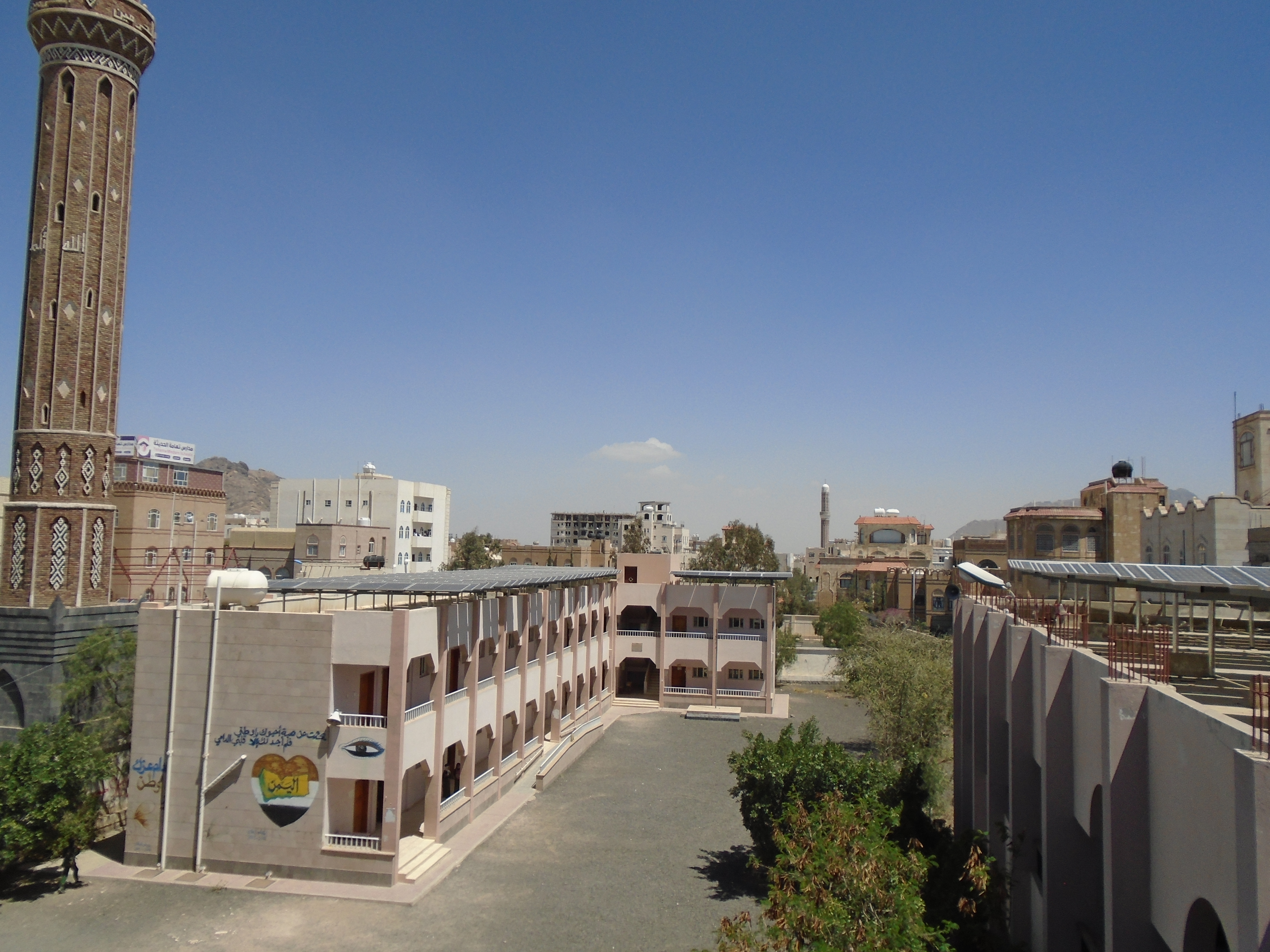
Solar water production
This practice concerns the successful use of solar energy for water pumping to overcome the difficulties water utilities face in obtaining electricity, irregular supply of fuel and its high cost. The practice is applied by Thamar LC as well as by other utilities and is having a considerable impact on the service level, cost of operation, revenue generation and the overall sustainability of the water services.
Description of the problem
Water utilities used to rely on public electricity to operate their system. However, the electricity sector has deteriorated since 2011 and water utilities suffered frequent power cuts. To overcome this problem the utilities obtained power generators (diesel type) to serve as a supplementary power source during public electricity cut offs, even though this was more expensive. The situation exacerbated in 2015 when the main public power station in Marib stopped functioning and there was very little fuel in the local market. The water utilities compete with other vital sectors (e.g. hospitals) in this market which is characterized by high fuel prices. The situation was so severe that water services were suspended by many water utilities.
Description of the good practice
Water utilities started to explore the use of solar power as a possible alternative energy supply as solar conditions in Yemen are good. Thamar LC obtained support from UNICEF to implement an integrated project to install a system with photovoltaic (solar) panels to operate all their 18 wells during daylight hours to ensure that customers are receiving their water service. A study was implemented to determine the solar system requirements based on the water demand. This included the analysis of the energy requirements as well as the design of the system for remote control of the pumps. The study also included hydrogeological analysis of the SAMAH wellfield and the capacity of the distribution system. A technical document was then drafted to prepare for the bidding process. Thamar LC with vital support from UNICEF constructed the solar power infrastructure with a system capacity of 1.3 MW (Figures 14 and 15). A detailed review of the performance of the system was conducted, looking at energy production (hourly loads), water production and performance of the wells. Security and safety measures were taken into consideration in the project design and are being implemented in the operation of the solar power system.
Impact and sustainability of the good practice
Shifting from fuel to solar-based energy has a great impact on the overall performance of the water utility. Water supply interruptions were prevented, as the utility no longer was plagued by the recurrent fuel crises and pumping cost reduced dramatically. After the installation of the solar system, Thamar LC was able to supply water on a daily basis to its customers. This improvement in the service level was well appreciated by customers who no longer had to pay for supplementary water from private tankers at much higher cost. The increased appreciation of the water service contributed to better payment of the water bills which helped the utility to turn their financial loss cycle into a virtuous cycle of profits. Benefits also include more motivated staff receiving regular payment of their salaries. With support from Unicef the utility was able to train their staff on operating the solar power system and wells and to use a remote control system. The utility moved further to improve its water supply and wastewater networks. Adopting clean energy alternatives is not only sustainable in terms of utility efficiency but is also an environment-friendly option.
Required Resources
The installation of solar systems requires considerable financial resources which may not be readily available to utilities. The cost of the study and engineering design for phase 1 and 2 of the project amounts to $25,000. The cost of the implementation of phase 1, a system of 0.5 MW, was $1.4 million; and of phase 2, a system of 0.8 MW, $1.9 million. The design and implementation of solar systems require special expertise in terms of electrical, construction, civil, mechanical and environmental engineering.
Figure 14 Site plan for solar panels
Figure 15 Installation of solar panels

